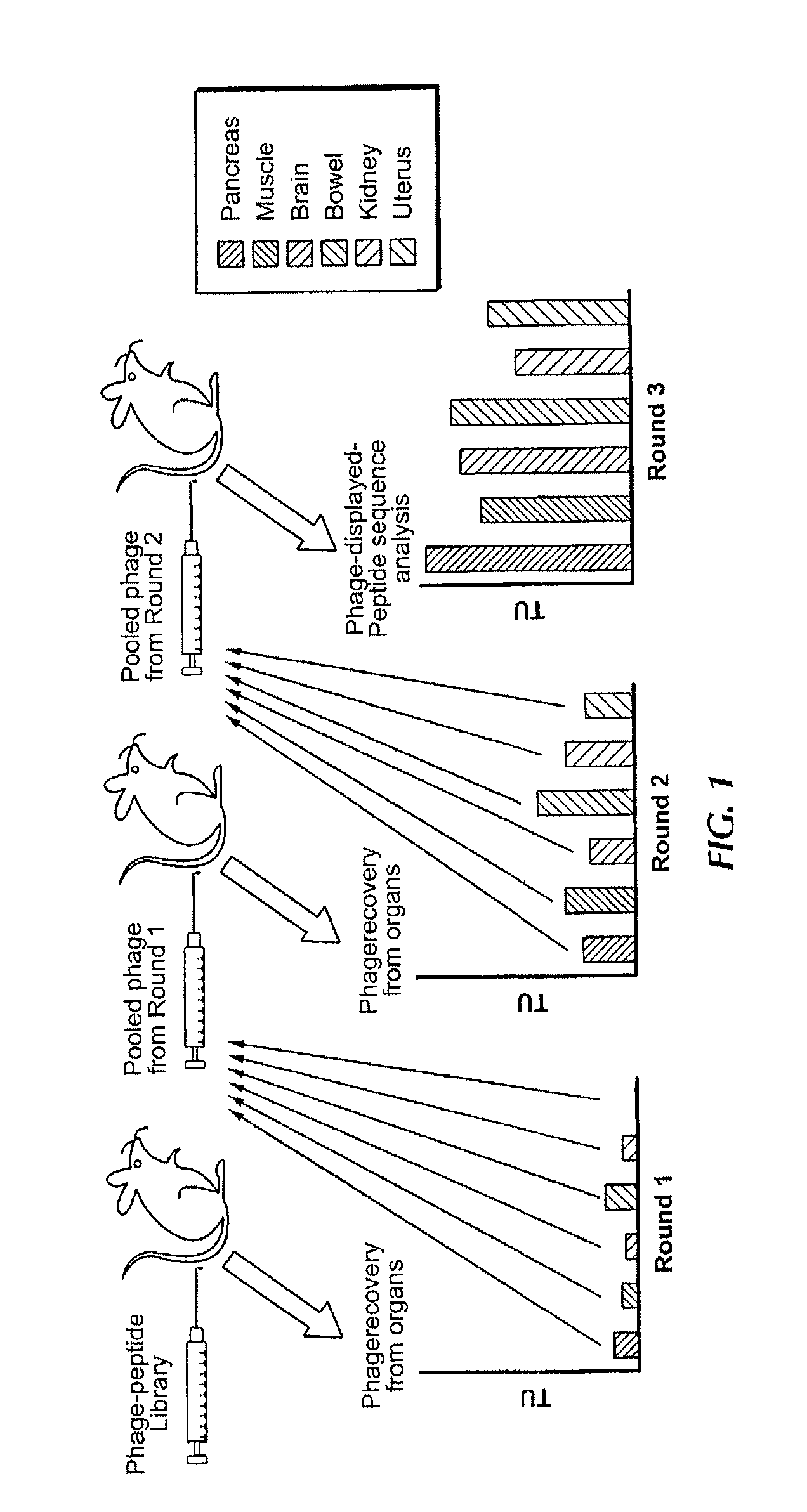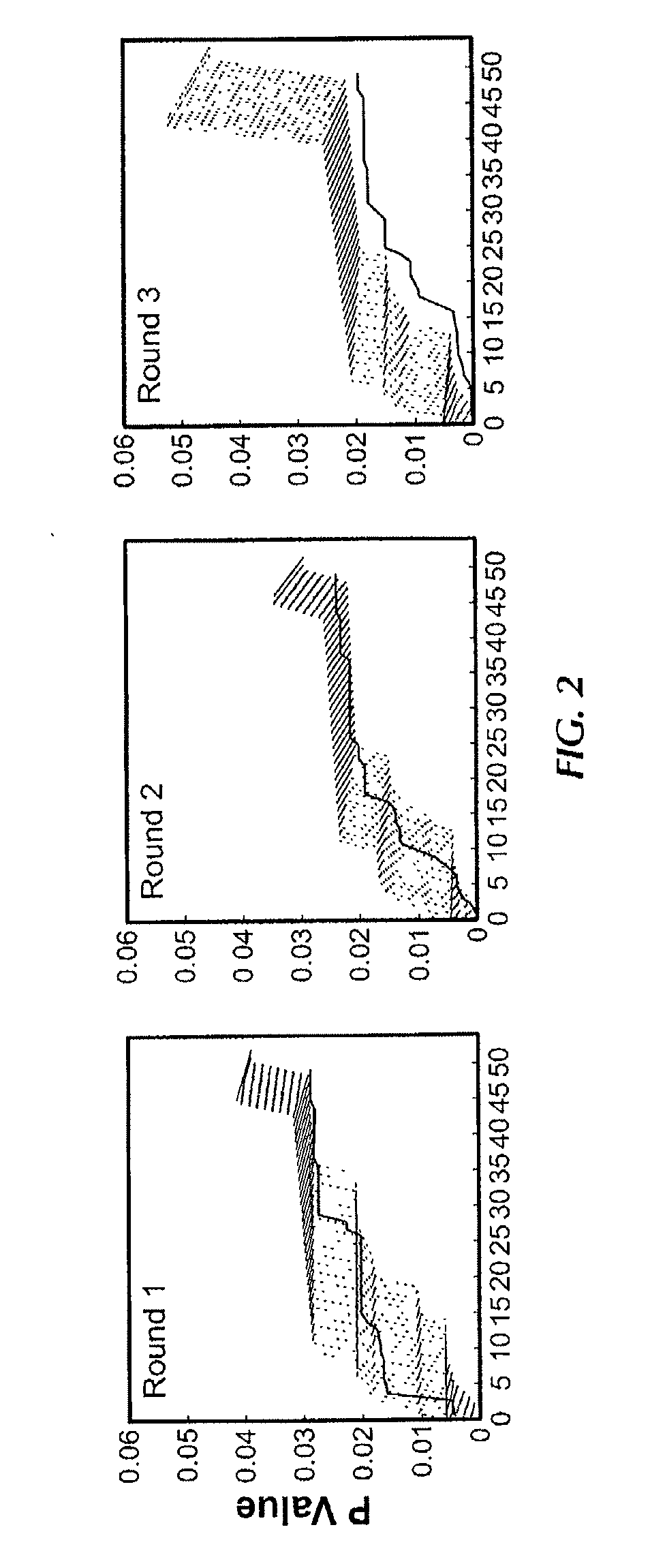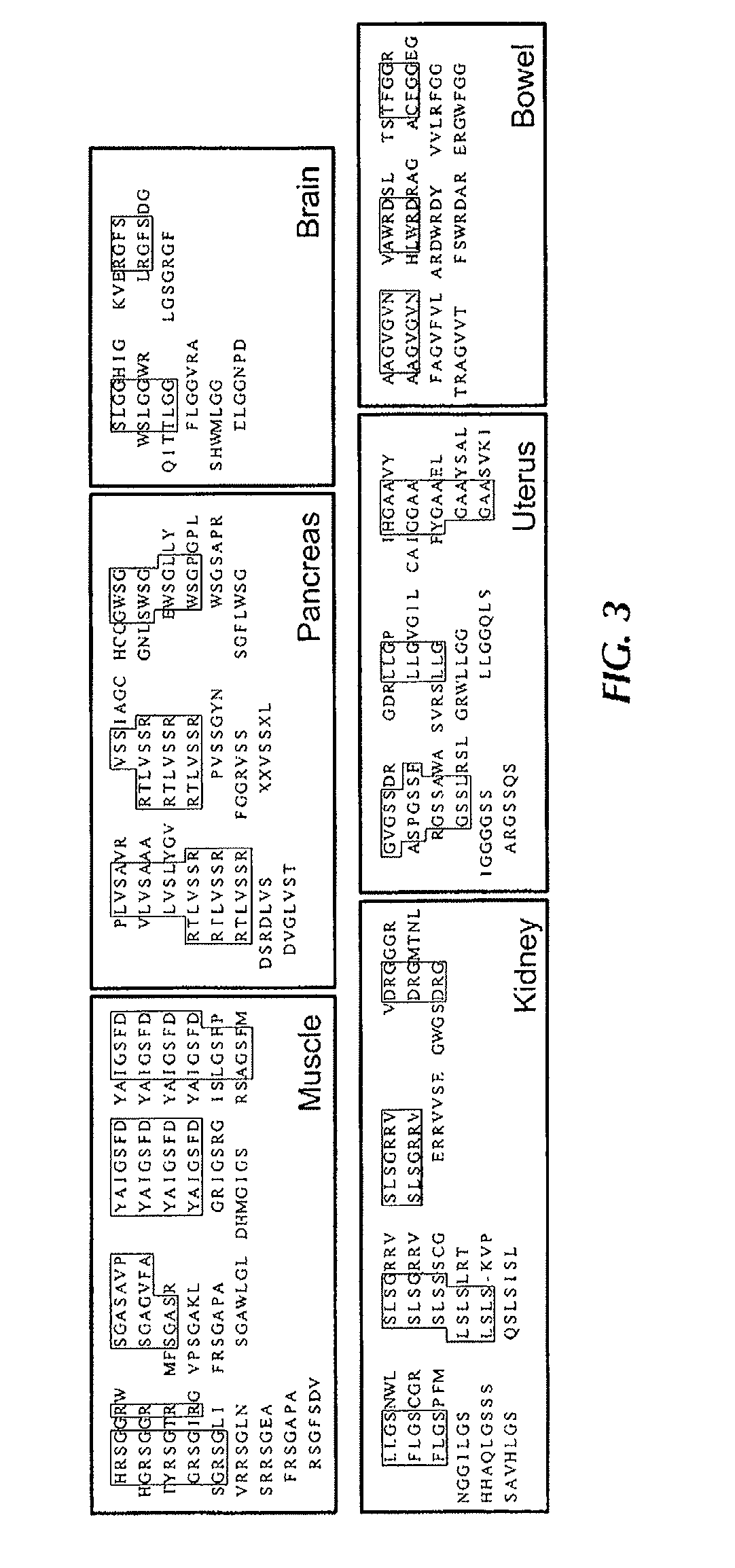Compositions and methods related to synchronous selection of homing peptides for multiple tissues by in vivo phage display
a phage and phage technology, applied in the field of molecular medicine and targeted delivery of therapeutic or diagnostic agents, can solve the problems of practical limitations of the number of phage clones that can be processed
- Summary
- Abstract
- Description
- Claims
- Application Information
AI Technical Summary
Benefits of technology
Problems solved by technology
Method used
Image
Examples
example 1
Synchronous Multiple Organ Peptide Selection
[0159]To establish the experimental framework for synchronous screening for peptides selectively homing to “n” given organs in the mouse model, a cyclic random phage display peptide library CX7C (C, cysteine, X, any residue) was screened Six exemplary tissues or organs were processed muscle, intestine, uterus, kidney, pancreas, and brain (FIG. 1) Three rounds of library selection were performed based on the previously described methodology (Pasqualini et al 2000), but without whole-body perfusion of the vasculature (Paqualini and Ruoslahti, 1996), which was skipped in order to simulate screening conditions used in patients (Arap et al, 2002) In each round, peptide-displaying phage were isolated from target organs, amplified, and pooled for the next round of selection Given that peptide-displaying phage homing to each individual organ are likely to segregate independently, it was reasoned that the final round of selection would always yield...
PUM
| Property | Measurement | Unit |
|---|---|---|
| size | aaaaa | aaaaa |
| time | aaaaa | aaaaa |
| hydrophobic | aaaaa | aaaaa |
Abstract
Description
Claims
Application Information
 Login to View More
Login to View More - R&D
- Intellectual Property
- Life Sciences
- Materials
- Tech Scout
- Unparalleled Data Quality
- Higher Quality Content
- 60% Fewer Hallucinations
Browse by: Latest US Patents, China's latest patents, Technical Efficacy Thesaurus, Application Domain, Technology Topic, Popular Technical Reports.
© 2025 PatSnap. All rights reserved.Legal|Privacy policy|Modern Slavery Act Transparency Statement|Sitemap|About US| Contact US: help@patsnap.com



